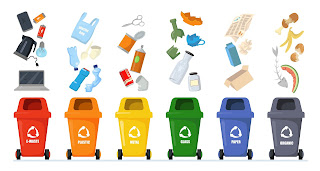From Junk to Genius: What’s the Real Difference Between Upcycling and Recycling?
As sustainability continues to trend in consumer choices and business practices, more people are looking for ways to reduce waste and protect the environment. Two buzzwords that often come up are upcycling and recycling. While they sound similar and both focus on reusing materials, the difference between upcycling and recycling is quite significant and understanding it can help you make more eco-conscious decisions.
Let’s dive into what sets these two waste-reduction methods apart, and how both play a role in the circular economy.
What Is Recycling?
Recycling is the process of breaking down used materials to create new raw materials. These are then re-manufactured into new products. Common recyclable materials include plastic, glass, aluminum, and paper.
How It Works:
Collection: Items like cans, bottles, and paper are collected.
Processing: These items are sorted, cleaned, and broken down.
Manufacturing: The raw materials are used to make new products.
Pros of Recycling:
Reduces the need for virgin resources.
Keeps waste out of landfills.
Creates jobs in the recycling industry.
Cons of Recycling:
Some materials degrade in quality over time (called “downcycling”).
Processing uses energy and resources.
Contamination can prevent proper recycling.
What Is Upcycling?
Upcycling is the process of creatively reusing materials without breaking them down. Instead of returning them to raw form, you give an item a new life often improving its function or aesthetic in the process.
How It Works:
Repurposing old or unwanted items into something useful or decorative.
No heavy industrial process needed—often involves DIY or artisan work.
Examples:
Turning old vinyl records into clocks.
Making tote bags from outdated event t-shirts.
Repurposing wooden pallets into furniture.
Pros of Upcycling:
Adds value to existing materials.
Requires little to no energy or industrial processing.
Encourages innovation and reduces demand for new products.
Cons of Upcycling:
May not be scalable for mass production.
Items may not meet safety or durability standards.
Often limited by creativity and market demand.
Key Differences Between Upcycling and Recycling
Here’s a side-by-side comparison to help you understand the difference between upcycling and recycling:
Why the Difference Matters
When it comes to sustainability, knowing your options is key. Recycling is great for mass-scale waste management but comes with its own environmental footprint. Upcycling, on the other hand, promotes a more creative, hands-on approach to giving old items new life—ideal for repurposing branded merchandise, outdated swag, or overstock products.
Organizations like SwagCycle specialize in helping companies upcycle unused promotional gear, ensuring that items like t-shirts, hats, and bags don’t end up in landfills, but in the hands of people who can use them or turn them into new, functional products.
Conclusion:
The difference between upcycling and recycling is more than just semantics, it's about mindset and impact. Recycling is necessary, but upcycling is innovative. Recycling is reactive; upcycling is proactive.
Whether you're a consumer trying to make greener choices or a brand looking to responsibly manage excess inventory, understanding the distinction between these two sustainable practices is the first step. So next time you clean out your closet or rebrand your company swag, ask yourself: can this be recycled or reimagined?
Ready to turn your junk into genius? Partner with SwagCycle and give your leftover merchandise a second life with purpose.



Comments
Post a Comment